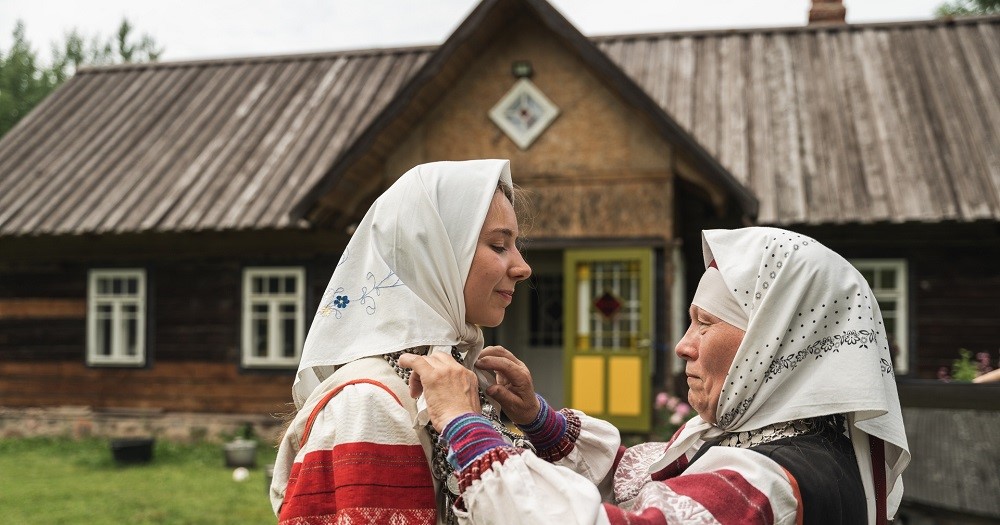Tips for sustainable travel in Setomaa
Sustainable travel usually goes with the word green. But in Estonia, it’s red — the vibrant red of traditional Seto folk costumes.
The Setos are a small, Finno-Ugric nation with several features that differentiate them from Estonians. Firstly, Setos are traditionally Orthodox. Secondly, the language is so different that Estonians have difficulty understanding or learning to speak Seto. Historically, Setomaa was part of Russian territory, but Setos have maintained a separate national identity, although Russia has had a major impact on Seto language, clothing, cooking, architecture, and music.
In Seto culture, red is the color of life; it protects the wearer from evil and illness. You’ll see red everywhere, from traditional embroidery to the red of Visit Setomaa’s logo. Setomaa is located in the far southeastern corner of the country, way off Estonia’s typical tourist track, making it the perfect destination for a sustainable holiday. This corner of Estonia may be quiet but has loads of vitality and fresh air. When you leave, you’ll feel more alive than ever — and it was even more alive in 2024, when Setomaa was a part of Tartu 2024, the European Capital of Culture program.

Here are four ways to travel sustainably in Setomaa:
1. Opt for green transportation
Going from Tallinn to Tartu takes two hours by train. Once in Tartu, hire an electric car, like an Elmo car. While driving in Setomaa, you’ll find vehicle chargers in Värska, at Värska Spa, and right outside Hindsa. Better yet, grab your bike, take the train to Koidula, and explore Setomaa on two wheels!
2. Hire a local guide
A local Seto guide can help you feel more comfortable visiting small communities by providing invaluable insight into the region’s unique culture and history. Visit Setomaa has a list of local guides who can provide tours in various languages. If you don’t hire a guide, stop at a local museum, such as the Värska Farm Museum or the Obinitsa Museum, where you can learn about the Seto’s famous silver jewelry or the UNESCO-listed leelo style of singing.

3. Eat, sleep, and buy local
Tourism is one way Seto people attract economic development to the region. Without jobs, locals leave to work in larger cities, putting the language, culture, and traditions at risk. While you’re in the region, eat at a local cafe and try sõir — this is a fresh, pressed curd cheese seasoned with cumin seeds and eaten with jam. Handicrafts make beautiful souvenirs and one-of-a-kind gifts. Seto lace even has its own celebration — Seto Lace Days.

4. Combine village visits with outdoor exploration
South Estonia is known for its stunning natural beauty. There are deep green forests, rolling hills, meandering rivers, and limestone outcrops. Canoe down the Piusa River, climb the Meremäe observation tower, or go bog-shoeing on the edge of Europe — these are great ways to add “green” to your sustainable holiday in Setomaa.
